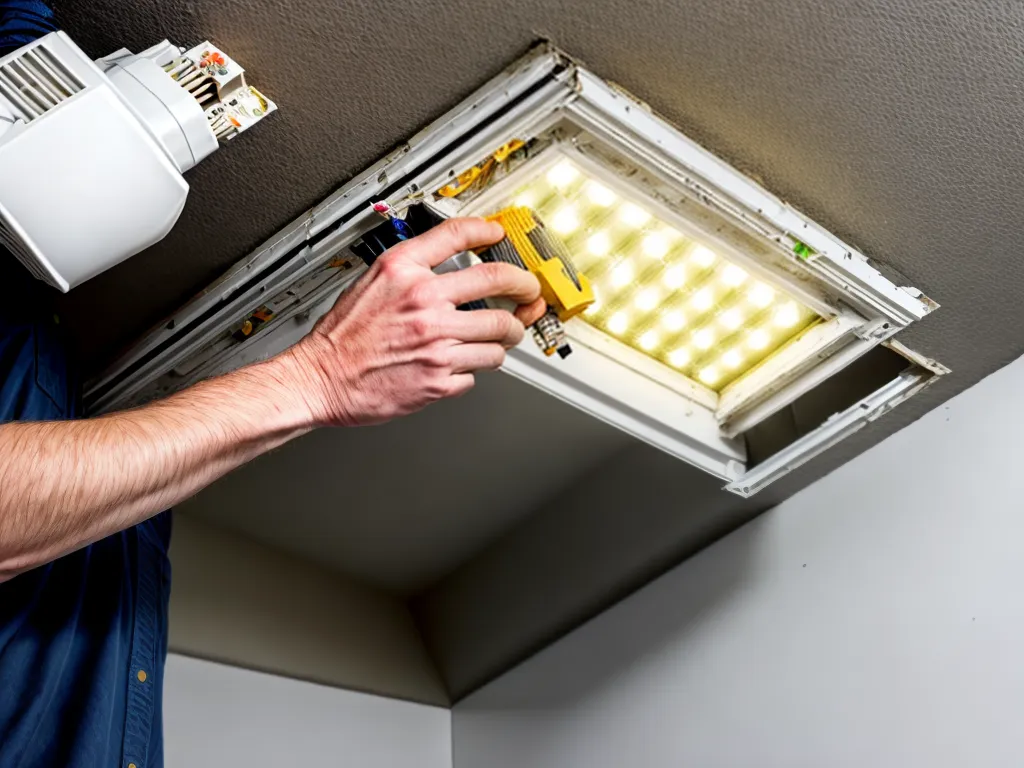
How to Replace a Faulty Ballast in Fluorescent Lighting
Introduction
Replacing a faulty ballast in fluorescent lighting can seem daunting, but it's actually a straightforward process that I can easily walk you through. As the homeowner, being able to identify and replace a bad ballast will save you time and money instead of hiring an electrician. In this guide, I'll explain what a ballast is, how to diagnose a faulty one, the ballast replacement process, and provide safety tips along the way. With a little time and the right materials, you'll be able to get your fluorescent lights working again.
What is a Ballast?
A ballast is an electrical device that provides power to fluorescent lights. It controls the voltage and current flow to the lamps. Inside the ballast are components like transformers, resistors, and capacitors that work together to regulate power.
Ballasts come in magnetic and electronic types. Magnetic ballasts use coils and inductors to control power output. They operate at 60 Hz frequency. Electronic ballasts convert input power to high frequencies using transistors and circuits. Electronic ones are more energy efficient and generate less heat and noise.
Fluorescent light fixtures use a ballast to limit the electrical current. Without it, the lamps would draw too much current and instantly burn out. The ballast makes fluorescent lighting practical and efficient by stabilizing the voltage.
Signs of a Faulty Ballast
How do you know when a ballast has gone bad? Here are some common symptoms:
- The fluorescent light flickers or strobes irregularly
- Light output is very dim even with new bulbs
- One bulb is lit but the other one is not
- The lamps take too long to reach full brightness
- You hear a humming noise from the light fixtures
If you notice any of these issues, it likely indicates a problem with the ballast, not the fluorescent tubes themselves. Time to replace it!
Ballast Replacement Process
Replacing a faulty ballast involves a few simple steps. Here is the process:
Step 1: Turn Off Power and Disconnect Fixture
The first step is to turn off power to the fluorescent light at the breaker. Then disconnect the fixture so you can work safely on it.
Step 2: Remove Old Ballast
Next, you need to remove the old ballast. This usually involves taking apart the light fixture housing and wiring chamber to access it. The ballast will be mounted to the housing or wired to the tombstones.
First uninstall any wiring connected to the ballast, labeling wires if needed. Then unmount the ballast from the fixture and discard it.
Step 3: Install New Ballast
Now you can install the direct replacement ballast. First, mount it securely in the same location as the old one.
Next, attach the wiring using the same configuration as the original ballast. Different ballast designs may have slightly different wiring. Refer to the wiring diagram on the new ballast and connect all wires properly.
Step 4: Reassemble Light Fixture
With the new ballast installed, you can reassemble the light fixture housing and install it back in place.
Step 5: Restore Power and Test
Lastly, restore power to the light circuit at the breaker. The moment of truth - turn on the light switch and make sure the new ballast operates properly! The lamps should now illuminate normally without any flickering or other issues.
Safety Tips
When dealing with electrical wiring, safety should always be the top concern:
- Turn off power at the breaker and use a non-contact voltage tester to confirm it's off
- Use a fiberglass ladder when accessing elevated fixtures
- Wear safety glasses and gloves in case of broken glass
- Disconnect both ends of light fixture when removing it
- Cap or tape any exposed wires during replacement
- Match wiring colors exactly when connecting new ballast
- Avoid reaching or touching other wires in junction boxes
Taking precautions will prevent electric shocks, shorts, falls, and other hazards.
Conclusion
Replacing a ballast is actually a very approachable DIY project for most homeowners without electrical training. The key steps are identifying the faulty ballast, removing it safely, installing a direct replacement, restoring power, and testing operation. With proper precautions, you can avoid hazards and get your fluorescent lights working again with a new ballast. Let there be light!